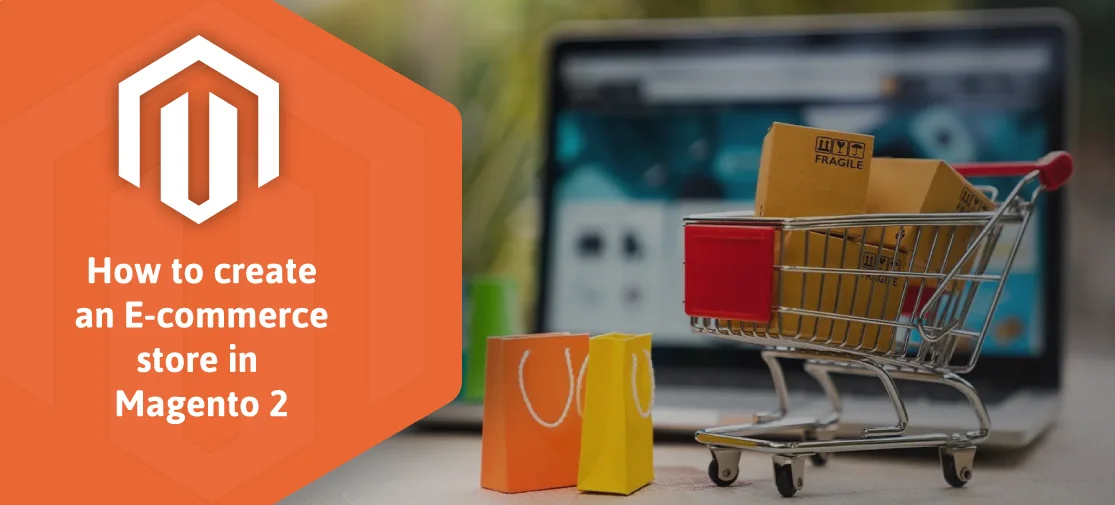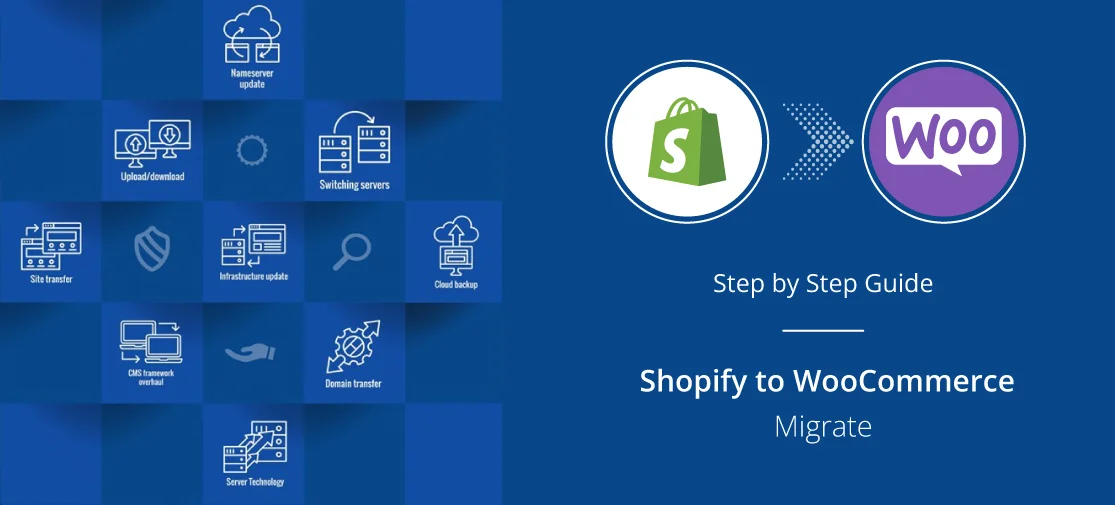Introduction
Ecommerce is the most basic and trending topic in every organization. Most businesses sell their offerings on an Ecommerce platform as it’s the only source where your business and sales can be boosted. Therefore, various programming languages and frameworks are being used to develop the best online store for it’s company.
As we know there are various frameworks and coding available such as WooCommerce, Django, Laravel and many more and from all of them, Magento 2 is one of the programming languages suited best to create an Ecommerce store for any business type.
What is Magento 2
Magento 2 is an advanced version of the previous version of Magento. The updated version is quite beneficial compared to the previous one as it offers.
- Better page loading speed.
- Checkout is faster.
- Enhanced performance.
- User-friendly interface.
When Magento was upgraded to its 2nd version many organizations got migrated to Magento 2 while developing its Ecommerce platform.
Why Magento 2 for Ecommerce?
The basic reason for this question is that it’s an open-source Ecommerce solution that allows you to modify the source.
The above pie chart gives a clear explanation of the usage of Magento while developing an Ecommerce platform. Since 2018 Magento has been also known as Adobe Ecommerce.
Step-by-step Guide to Creating an Ecommerce Platform on Magento 2.0
As you know the significance of Magento 2 while you're developing an Ecommerce platform. So, let's get started and create an Ecommerce platform using Magento 2.0.
Step 1: System Requirements for Magento 2
As it’s an advanced version there will be some specific stack and hosting requirements will be required.
- Operating System : Magento 2 is supported in Linux x86-64 or any other Linux distribution as it is not supported on macOS or Windows.
- Memory : You may require at least 2GB of RAM for its latest version.
-
Database : Over here you get various options regarding MySQL. The versions you can use are
-MySQL 5.6 for Magento 2.0.x and 2.1.1.
-MySQL 5.6, 5.7 for Magento 2.1.2 and higher.
-MySQL 8.0 for on-premise installations.
- PHP : Magento 2 supports PHP 7.2 and PHP 7.3 but, if you are working on the latest version of Magento 2.4 then PHP 7.4.0 is recommended. You should also work with the PHP OPcache which is an extension that optimises the performance and avoids the common issue.
- Web server : Apache 2.4 or Nginx 1. X can be used. While working on Apache you need to enable Apache mod_rewrite and mod_version modules.
- Security : You will require a valid SSL(Secure Sockets Layer) certificate for HTTPS and TLS(Transport Layer Security) requirements from repo.Magento.com
Step 2: Select a host provider
Selecting a host is one of the critical components as it ensures stability, and performance for a successful Ecommerce platform. Over here it’s the same where requirements are made that satisfy the Magento 2 version.
The necessary hardware and utilities for operating Magento 2 are available from numerous hosting providers. In addition, some offer a one-click installation option and are platform specialists.
To improve the conversion rate on the Ecommerce store Magento 2 should not take more than 2 seconds to load your website. The more the loading speed is the more you lose your customer. So, ensure that it has a fast response time.
With the help of the SSL certificate, various payment gateway can be selected with security options. Moreover, your Ecommerce isn’t going to be stable. Regular updates will be frequently done in your online store. Therefore your hosting plan should be scalable enough to meet your future needs.
Step 3: Download and install
So now once you have installed a relevant hosting provider the next you have to do is download and install the latest version of Magento. Most of the hosting provider offers a simple one-click installation which is completed within minutes.
So, before downloading you need to create an account first, and if you are a new customer you need to register.
After creating the account you need to follow the path as Product> Where to Start> Open Source> Get Started> or Resource> more resources> Download Release and Patches, or even Community > Connect > Get Open Source. These paths lead you to a page where you can download the package.
Step 4: General configuration
After a successful installation, the next step is to fill in the essential information of your Ecommerce store. From the admin Sidebar navigate to Store>Settings>Configuration>General.
It’s detailed information about your online store which will be visible to your customers. The information includes general queries such as store name, country, etc.
Step 5: Select a Theme
Magento 2 come with a default theme as Luma. It’s not just the one but there are around 3000+ paid free themes available.
If you are willing to build an Ecommerce platform from scratch where you have to cover logos, colours, layout and all other things that make your online store delightful and give an impressive website appearance then navigate to Content> Design> Configuration
Additionally, Magento 2 lets you make new CMS pages and banners right out of the box to add variety to your website.
Step 6: Extensions
A wide range of extensions from various sectors are available in Magento to quickly add new features to your online store. The marketplace offers extensions that you may search for or filter, and then add to your shopping.
Numerous extensions, both free and paid, are available to add essential functions like shipping logic, analytics, security, payment gateways, and more.
Step 7: Configure catalogue (Add Product)
As your Ecommerce store is finally set up it’s time to make your offerings live to your customers. Magento 2 offers products, categories and subcategories where you can manage your online store effortlessly.
Navigate to catalogue>products>add products where you can categorize them accordingly. Moreover, Magento 2 allows you to define your product as Simple Product, Configurable product, Grouped product, Virtual product, Bundle product and Downloadable product.
Step 8: Payment and shipping methods
Your products are live but when it comes to purchasing you have to integrate the payment gateway. Magento offers various types of payment methods from bank transfer to COD(Cash On Delivery).
Furthermore, Magento 2 provides 7 shipping methods integration where you can set it up by navigating to Store> Configuration> Sales> Shipping Methods
Depending on your store location you are allowed to set up a distribution centre of different shipping services and methods like table rates, in-store delivery and even more.
Step 9: Preview and Launch It
Here you have reached the final step where you need to preview your Ecommerce platform where you need to run the necessary test regarding the website speed, order placement, web responsiveness, and code vulnerabilities. So, just add your custom domain and make your Ecommerce store live.
Future of Magento 2 in Ecommerce
Magento 2 and Ecommerce will be a never-ending trend. Magento 2 will remain the top choice while developing an Ecommerce platform for any sized business. With the outcome of Magneto 2 the evolution of the Ecommerce platform came to an immense increase as Magento 2 came out with several improvements such as
- Quick server response.
- Support new technologies.
- Two-factor authentication.
- Catalogue inventory and order management.
With its user-friendliness and business scalability, Magento 2 will remain the best and first priority for its robust, and highly customizable solution for every Ecommerce platform in the next coming years.
Conclusion
So, now you are well known for creating an Ecommerce store in the Magento 2 version, but just creating one isn’t enough. Regular optimization of your store functionality is required to allow the customer to revisit your website for which you have to work on different strategies and to eliminate all the hassle you just need to Contact us where our experts strive to create a fully functional Ecommerce platform that ensures for the best outcome with a positive result.




